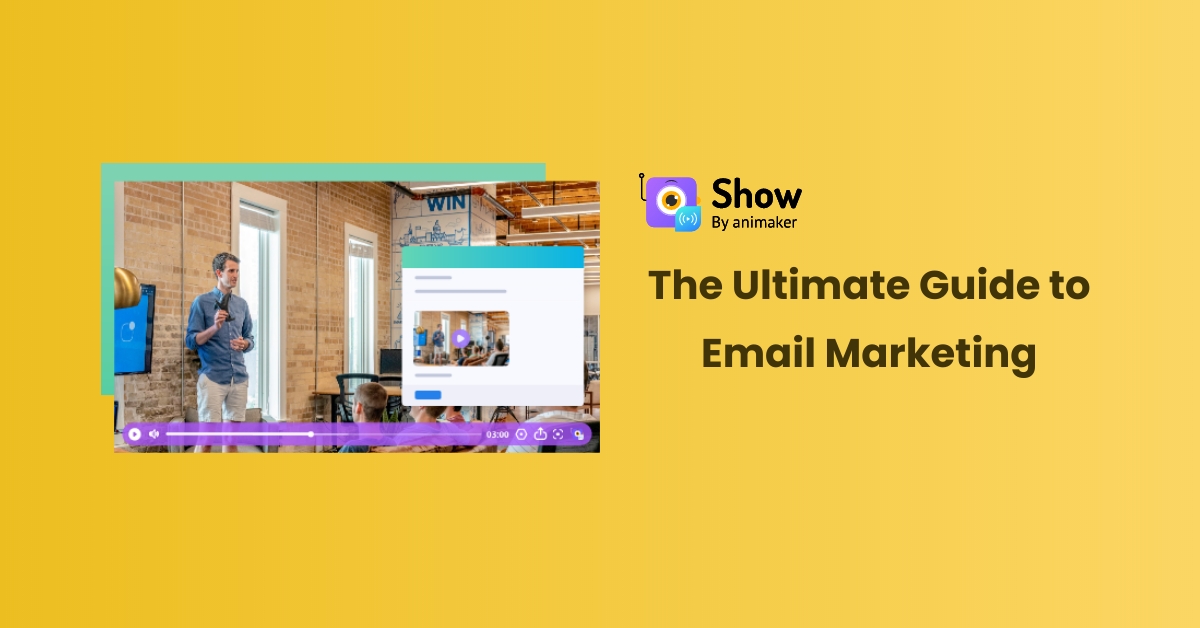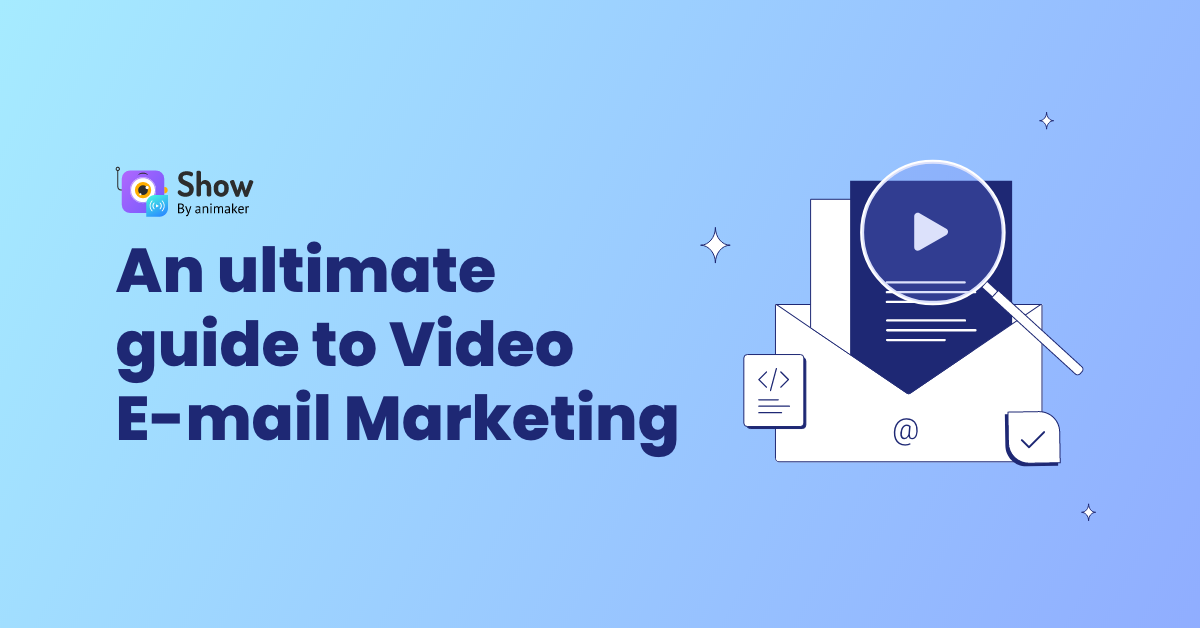Contents
Different Types of Email Lists
How to Set Up an Email Marketing Strategy
How to Create Effective Email Campaigns
The Ultimate Guide to Email Marketing
Email marketing is omnipresent in every marketing strategy. It has been written off from time to time. But email marketing has persisted to remain a cornerstone of a marketing strategy. Having email marketing as a part of your marketing strategy is given. However, executing your email marketing strategy in the right manner is a different story altogether. In this blog, we will give an ultimate guide to email marketing.
4 billion people use emails daily. They are ubiquitous. They are an effective marketing strategy. Email marketing allows businesses to reach their target audience in a personalized, targeted, and timely manner. Your email marketing’s efficacy can be measured with analytics as well. Email marketing can do wonders for your business if executed well.
What Is Email Marketing?
Email marketing is a marketing strategy that involves communicating about your business to prospective customers and customers at every stage of the marketing, sales, and customer funnel. The emails you send can be educational, informational, promotional, and so on. The email marketing strategy’s goal is to increase brand awareness, strengthen relationships, and drive revenue.
Benefits of Email Marketing
Here are the benefits of email marketing:
- Increased Brand Awareness
Emails allow you to remain in the heads of your target customers. You can keep sending promotional emails, updates, and, heads-ups about your new products and services to them. Email marketing is one of the best ways to increase your brand awareness and help your brand carve a place for itself in the heads of the customers. Smartphone users prefer to receive brand communications via email.
- Low-Cost
Email marketing is relatively lower compared to its other marketing counterparts. Meanwhile, it also provides a better Return on Investment because you can run targeted campaigns. In email marketing, there are no traditional printing and posting costs. You can reach your target audience without any middlemen. In addition, you save both time and money if you automate your email marketing.
- Targeted Messaging
Email marketing allows you to send relevant emails to each segment of your recipients. You do not need to shoot in the dark and hope for things to fall into place. You can send emails based on the actions taken by the users or at the stage they are in the marketing and sales funnel. You can also send them emails according to their use cases. Email marketing proves to be more efficient as it allows you to target your audience effectively.
- Increased Engagement
Email marketing facilitates segment-based emails, personalization, and interactive content. Ergo, your engagement rate with your customers is bound to increase. Sending relevant, personalized, and interactive emails to your recipients makes them feel important, and your engagement rate will definitely increase.
- Email Automation
You do not have to sit down and type in all the emails to your recipients. All you need to do is automate them based on the actions of users and customers. For instance, you can automate relevant emails to a user who has just subscribed to your email newsletters. You can also set up action-based triggers to automate your emails
What Are Email Lists?
Email lists play an integral role in email marketing. Email lists are built based on the actions of users, subscribers, prospects, and customers. Different actions warrant different types of segmentation. For instance, the email you send to a newsletter subscriber will not be the same as a new customer who is awaiting his onboarding. Email lists help you eradicate any confusion. They also help you in sending targeted, relevant, and timely emails to your recipients.
Different Types of Email Lists
Here are the different types of email lists:
- Subscriber List: A subscriber list is maintained for customers who have opted to receive emails from the business. For instance, newsletter subscribers are a part of this list.
- Customer List: This email list contains customers who have already purchased products from your business. This is perhaps the most valuable list as they have already added to the revenue of your business.
- Prospect List: This email list contains prospective customers who have expressed interest in your business. However, they are yet to turn into your customers.
- Lead List: This email list contains information about individuals who have expressed interest in your business by filling out forms or attending one of your business’ online or offline events.
- Inactive Subscriber List: This email list includes subscribers who have not engaged at all with your emails over a certain period. The inactive subscribers need to be weeded out from time to time so that you are sending your emails to relevant customers.
- Suppression List: This email list contains recipients who have opted out of receiving your emails. These recipients need to be removed so that you do not face any legal and reputational repercussions.
How to Set Up an Email Marketing Strategy
Here’s how you can set up an email marketing strategy:
- Define Goals and Objectives
The first step in creating a judicious email strategy is to define goals and objectives. You should know the outcome you are seeking to achieve with your email marketing strategy. The email marketing strategy cannot be designed haphazardly.
You should aim to create SMART(specific, attainable, measurable, relevant, and time-bound) goals. Create Key performance indicators(KPIs) or objectives and key results(OKRs) based on your goals to measure success.
- Identify Your Target Audience
Knowing your target audience is an integral part of your email marketing strategy. You cannot shoot off emails to recipients who are not even remotely interested in your product. Identifying a target audience is a process in itself as you need to identify the pain points your product solves. You also need to create your ideal customer profiles(ICPs), and target buyer personas.
- Email Frequency
Deciding the rate at which you will send emails to your customers is an integral part of your email marketing strategy. You cannot overwhelm your recipients with a barrage of emails. At the same time, you also need to maintain an optimal frequency to maintain your engagement with your target audience. Testing and analyzing your emails can help you arrive at the best email frequency for your business.
- Content Strategy
Your content strategy showcases your brand tone and style. For instance, the content strategy for a healthcare brand cannot be the same as a gaming brand. You need to shape your content strategy based on your target audience and your product. Your content strategy can also include the use of visuals such as images, infographics, and videos.
- Personalization and Segmentation
Addressing your recipients by name is just the first step toward personalization. You can also personalize emails based on factors such as subscriber data, purchase history, and so on.
Segmentation is done based on the actions of the customers. Demographics of your recipients play a part in segmentation too. It also depends on the stage of the buyer’s journey the recipient is at.
How to Create Effective Email Campaigns
Here’s how you can create effective email campaigns:
- Effective Email Design
Email design is the way your email looks when the recipient opens it. The email design of your email campaigns should represent what your business stands for you. The email design should be visually appealing. At the same time, it should also subliminally inform your recipients about your brand. A consistent email design also shapes your brand and gives your business identity. You should also ensure that your email design looks good across all devices.
- Effective Subject Lines
The subject lines offer a peek into your emails to your customers. An effective subject line should be concise, appealing, informative, and attention-grabbing. The subject lines should offer a reason to the recipient to open your emails.
- Email Copywriting
Copywriting is the art of persuasion. A good copy informs, educates, persuades, and convinces a reader. Effective copywriting principles should be applied throughout your emails. Email copywriting will make your emails readable, engaging, persuasive, concise, and educational at the same time.
- Effective Call-to-Actions(CTAs)
A call to action is a crucial part of almost every email. It encourages the recipient to take the desired action. Ensure that your call-to-actions are effective. A fundamental rule of the CTA is that it should be action-based. Copywriting writing principles can be applied to CTA buttons as well albeit at a much smaller scale.
- Testing and Optimization
Optimizing your emails is going to be a constant part of your marketing journey. Remember that there is always scope for improvement. You should keep experimenting with different types of emails. Conduct A/B tests to know what is working and what is not. Improve your emails based on the analysis of your emails.
- Email Automation
Email automation is the process of automating your emails to send targeted, relevant, and timely emails that appeal to your target audience. Email automation is mainly based on the actions, cadences, behaviours, and demographics of the recipients.
For instance, you can send welcome emails to a new user or you can set up drip campaigns for a customer who is on his onboarding journey.
There is one more overlooked factor in email marketing: email deliverability. Let’s have a look at it.
What is Email Deliverability?
The success rate of an email reaching its intended recipient is known as email deliverability. It is measured by the number of emails that actually reach the inbox of a recipient instead of ending up in spam, outbox, or being rejected by email providers.
Factors that Affect Email Deliverability
Here are the factors that affect email deliverability:
- Sender’s Reputation
The sender and the IP address via which the email is being sent play a huge role in the deliverability of the emails. Email providers constantly update their algorithms to detect and stop emails from shady senders and IP addresses.
- Email’s Content
The subject line, content, and media used in the email can also affect the email’s deliverability. Emails that contain spam triggers such as excessive exclamation marks, all-caps text, susceptible links, and so on have a huge impact on the deliverability of the emails.
- Email List Quality
The quality of the email list is one of the keys to determining your email’s deliverability. Your email deliverability rate decreases if your email list contains too many inactive emails and invalid addresses. - Email Service Providers’ Reputation
The credibility of the email service providers plays a massive part in determining your email deliverability. Reputable email service providers have strong relationships with email providers. The consolidated relationship ensures that your email deliverability is healthy.
Tips to Improve Email Deliverability
Here are the tips to improve deliverability:
- Build a Good Reputation
Send emails to valid and active email addresses. Avoid spam triggers, and keep an eye on metrics such as your open rate and bounce rate to avoid decreasing your email deliverability.
- Segmentation
You can increase your deliverability by sending relevant, targeted, and timely emails to your recipients based on the segments they belong to. Doing so increases your engagement rate and decreases the bounce rate of your emails.
- Authenticate Your Emails
There are authentication protocols such as SPF, DKIM, and DMARC that will authenticate your emails, and improve your deliverability rates.
What are Email Analytics and Metrics?
Email analytics and metrics are the mainstays of email marketing campaigns. Email analytics provides you with data based on the performance of your emails. While metrics help you gauge whether the emails’ performances are living up to your expectations.
The Tracking email analytics and metrics help you to gain insights based on the data of user behaviour. You can identify your key areas of improvement based on analytics and optimize your emails based on them.
What Are the Key Email Metrics?
Here are the key email metrics that you should track:
- Open Rate: The percentage of emails that have been opened.
- Click-Through Rate(CTR): The rate at which the links in your emails were clicked.
- Conversion Rate: The rate at which your recipients follow up on the desired action after they click on the link.
- Bounce Rate: The portion of emails that were not successfully delivered to your recipients.
- Unsubscribe Rate: The percentage of recipients that have unsubscribed from your emails is known as the unsubscribe rate.
- Engagement Rate: The rate at which your recipients have engaged with your customers is known as the engagement rate.
- Revenue Generated: The revenue that has been generated from your email marketing campaigns.
Conclusion
The importance of email marketing cannot be overstated. However, you need to execute your email marketing strategy in an effective manner. Follow the best practices to create effective email campaigns, practice personalization, and segmentation, keep a check on your email deliverability and track and analyze your emails.




